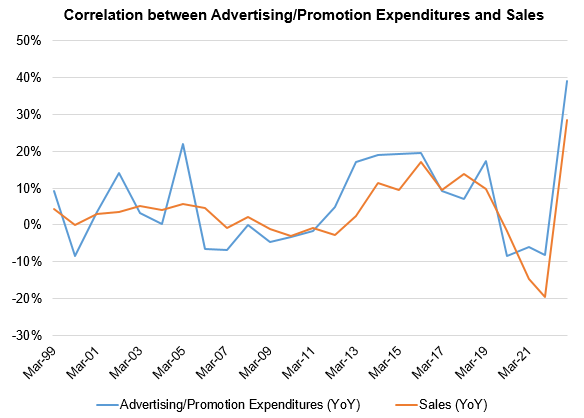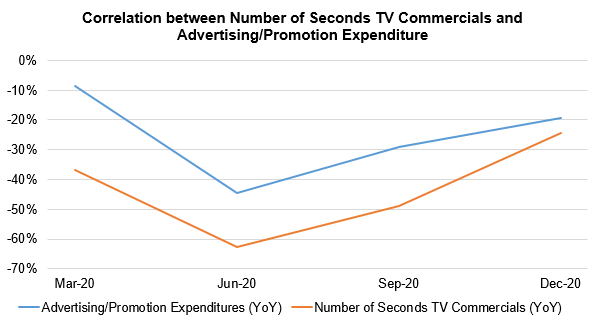Japan Markets ViewReading Ahead Corporate Sales Based on TV Commercial Airing Data
Jan 24, 2024

Despite the recent growth of Internet ads, TV commercials continue to have a significant influence. They continue to hold an important position as a means of advertising corporate products and services. This article introduces an analysis using TV commercial airing data provided by M Data Co., Ltd. (M Data) to forecast corporate sales, and examines the effectiveness of this analysis.
M DATA provides “TV metadata,” which is text data recording TV broadcast content. This includes data on TV programs, TV commercials, products as well as spots (stores, facilities, and sightseeing spots) exposed in the programs, etc. The data becomes available even on the day of broadcast with securities codes of companies exposed in the programs and CM advertisers listed in Japan. This study performed an analysis using the “TV-CM data” contained in “QUICK Data Factory.” It is a data platform provided by QUICK, a financial information provider. The TV-CM data is text data consisting of basic information as follows.
– Dates and times of the TV commercial airings
– Broadcasting stations
– Company names
– Product/brand names
– The number of seconds of airtime
– Situations of the commercials
– Celebrities appearing in the commercials
– Music used in the commercials
Correlation between Corporate Advertising Expenditures and Sales
Effective use and analysis of advertising/promotion expenditures are critical to corporate advertising strategies. Advertising through TV commercials has a great potential to enhance the visibility of products and services, thereby increasing customer interest in them. As a result, increased sales can be expected.
It was reported that KOSÉ (4922), a major Japanese cosmetics manufacturer, boosted its sales significantly by featuring Shohei Ohtani, a U.S. Major League Baseball player, in its TV commercials. The company has been actively featuring famous celebrities in its TV commercials to enhance its brand image.
First, we compared the rates of change in sales and advertising/promotion expenses (YoY) over the past 25 years, which KOSÉ has publicly announced.

The correlation coefficient is high at 0.78, indicating a correlation between KOSÉ’s advertising/promotion expenditures and sales. Advertising effectiveness may vary by industry and company. However, in the consumer goods industries, including cosmetics, there are relatively many cases where advertising, which influences brand recognition and consumer preference, impacts sales. If forecasting the company’s advertising/promotional expenditures can be done, it would also be possible to project its sales.
Utilizing TV-CM Data to Forecast Ad Spending
Then, how can we infer the scale of corporate advertising/promotion expenditures? Companies often disclose the amounts of such expenditures when they announce their financial results, but usually disclose them about one month from the end of the fiscal year. Is it possible to make a prediction earlier?
In general, the more TV commercials a company runs, the more money it will spend on advertising. Let us take a look at KOSÉ again. We totaled the number of seconds of TV commercials aired by KOSÉ each quarter and compared the rate of change (YoY) to the company’s advertising/promotion expenditures.

The results show that the number of seconds TV commercials were aired is linked to advertising/promotion expenditures. The correlation coefficient is as high as 0.81. The TV-CM data provided by M Data is collected immediately after the broadcast. It is, therefore, possible to grasp the lengths and number of TV commercial airtime in real time. Thus, by using the TV-CM data, it is possible to grasp rough trends in corporate advertising/promotion expenditures prior to the announcement of quarterly or annual financial results.
In this article, we demonstrated the possibility of predicting corporate sales based on the TV-CM data through the case of KOSÉ. Given the high correlation between advertising/promotion expenditures and TV commercial airtime, a precise analysis of these data would allow investors to more accurately understand corporate advertising strategies and associated sales trends, which could then be used to predict future business performance.
TV Metadata on QUICK Data Factory
https://corporate.quick.co.jp/data-factory/en/product/data042/




